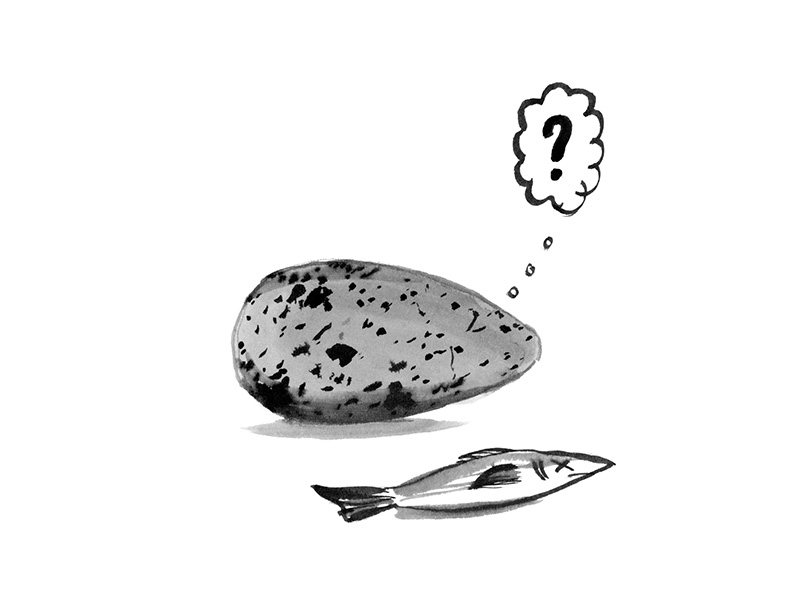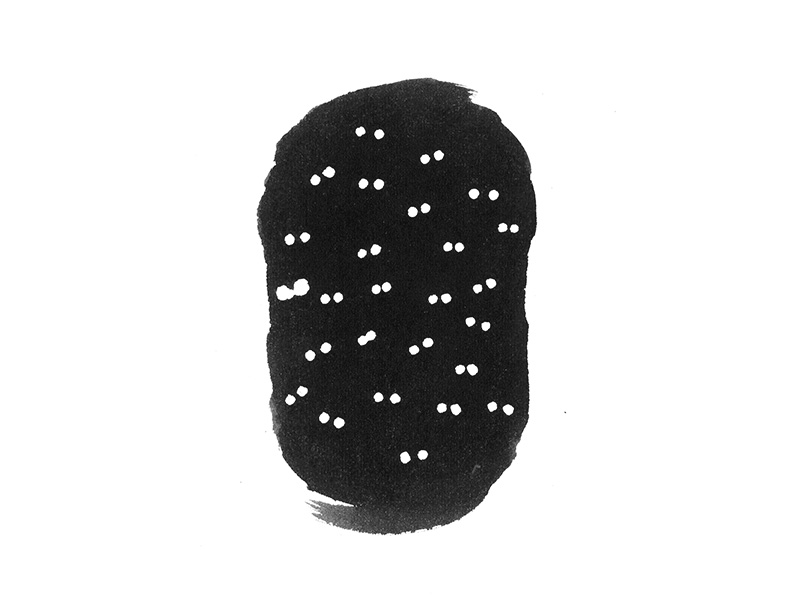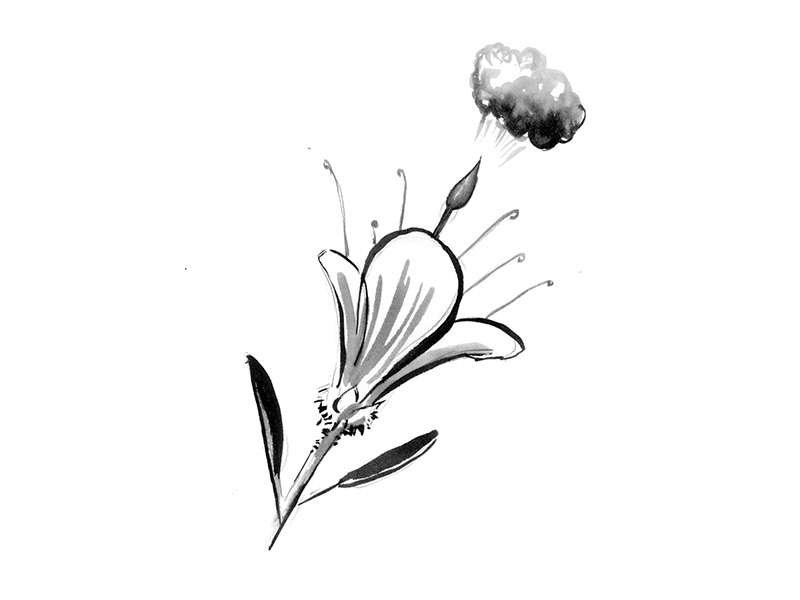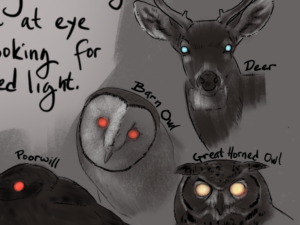Readers,
We enjoyed the stories you sent us for the Winter 2023 Issue so much that we did a second round of Encounters for the Spring issue. Here in the Spring 2023 edition, you will be treated to some hot goss on seabirds, a chilling nighttime discovery, and a surprisingly aggressive flower, among other tales. With illustrations, as before, by me. Enjoy.
—Kate Golden, digital editor
Murre derps
As biologists, we aren’t supposed to anthropomorphize animals, but sometimes I can’t help myself. I’ve spent hours watching colonies of common murres in the Farallones. They are a bowling-pin-shaped seabird, in an adorably penguinlike black-and-white suit. They’re devoted parents, excellent swimmers, and very strong. They are not, however, very smart. After mating, it isn’t uncommon for a male to peer between his feet as if to say, “Well? Where’s the egg?” and then find the closest rock, settle it contentedly between his feet, and try to incubate it. He seems to realize something isn’t quite right, because he never develops the look of a murre with a real egg, which I can only describe as supremely satisfied. Once the egg finally arrives, a parent will sometimes return from the sea with a fish in its beak, then offer it to the egg. I’ve never seen the egg take the fish, and the parent usually offers it repeatedly before eventually dropping the fish in front of the egg as if to say, “Maybe later, then.”
—Amy Miles, Davis

Tiny spooks
My 18-year-old son is an avid astrophotographer, and we’ve spent a lot of time together in the darkness. One summer night with a new moon, we headed out to the Benicia hills. My son trudged forward confidently in the dark, letting his eyes adjust, but I was nervous and used my phone’s flashlight to guide my steps, hoping to avoid tripping on rocks or running into a snake. The light was reflecting off hundreds of tiny, glittering stones in the gravelly dirt. Beautiful! My son teased me for using my phone to light up the path. Suddenly, he gasped and said, “Uh, Mom? Those shiny things we’re seeing on the ground? Those are SPIDER EYES!” We both stifled screams—and walked a lot more gingerly after that. The magical time with my son made my heart happy. And I smiled to realize that my tough, adventurous boy was still afraid of something.
—Kristen Rogers, Vallejo

What we miss
We were at a county park in the Santa Cruz Mountains one afternoon, and campers were returning from their adventures. They settled into camp chairs with books or beverages, started dinner preparations, rode scooters, played catch. All this I saw as I walked around the campsites, until I turned up a trail toward the hill above the camp. Suddenly, I heard a loud rustling. I tensed, ready to back down. A bobcat had caught a squirrel. They were somersaulting together down the hill through the dried leaves, the squirrel clenched in the bobcat’s jaws. When the tumbling stopped just feet from me, the bobcat eyed me and then, prey tightly secured, turned and trotted back up the hill into the brush. Meanwhile, below me were voices and laughter, the zipping of tent flaps, the whine of air compressors. Nature’s drama was playing out just steps away.
—Janet Galen, Menlo Park

Winter feast
Winter in Davis is not ideal for hummingbirds, with cold night temperatures and not many flowers. Taking a break from grading papers, I popped out for a breath of air when I spotted a female hummingbird hovering in front of a security floodlight, mounted near the door. What was the hummingbird doing? Was it somehow mistaking the lights for flowers? No. A closer look showed old spider webs laced around the box. The hummingbird was hovering and probing, picking insects off the spiderweb! Precision foraging.
—Andy Sih, Davis
Flower power
I was researching how defensive plant chemicals alter nectar, the reward flowers offer pollinators for their services. My subject was the bladderpod, a California native with lovely yellow flowers ornamented by drooping leathery pods. I approached a huge, dense wall of sprawling shrub, unaware of what was to come. I gently unfolded the petals of a large flower, peering inside. It was full of nectar. But with that information came a wave of noxious odor. I reeled back, confused about the source of this odiferous assault. In my haste I stepped on a low-hanging limb of the shrub, crushing a handful of leaves, which released even more of the strong-smelling compound. Once safely away gulping fresh air, I heard the unmistakable zip of an Anna’s hummingbird. It was harvesting nectar from the bladderpod’s flowers, apparently unperturbed by the scent. Perhaps, I thought, I could train my nose to associate this peculiar smell with happy hummingbird feasts rather than rotten socks and burned popcorn. That would certainly make my forthcoming work more pleasant.
—Leta Landucci, Davis

Saved by the gull
In January, my wife and I saw a merlin trying to capture a black-necked stilt along Martinez’s waterfront wetland. The stilts were in deeper water than usual, floating near some gulls. The merlin attacked and the stilts went under water … again and again, for 20 minutes! We believe it was trying to tire the stilts, and time its attacks for when they resurfaced. Finally, 20 or more gulls put an end to it: They took off, mobbed the merlin, and escorted it out of the area.
—Martin Mazar, Pleasant Hill




